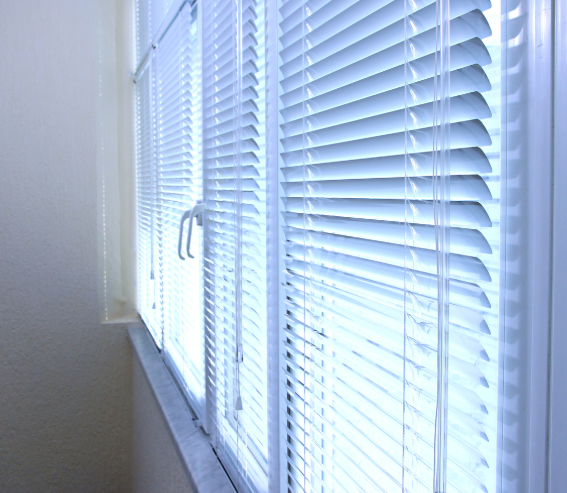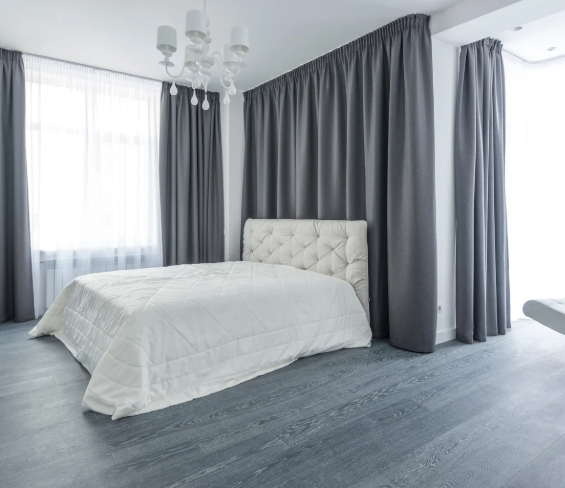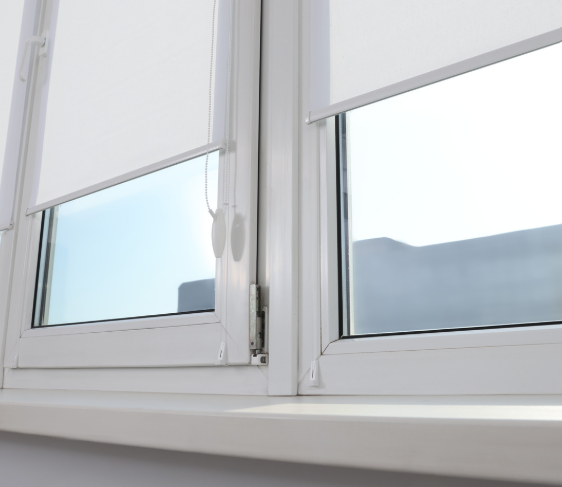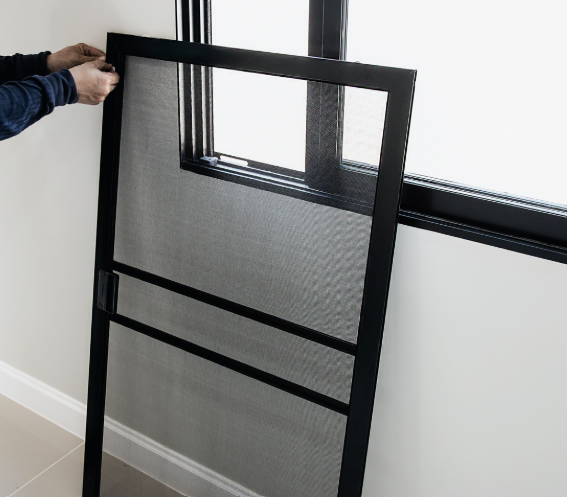Discover the best way to cover windows to keep the house cool during hot months in Hurst, TX. Explore shades, blinds, and outdoor solutions for ultimate cooling.

Windows play a vital role in regulating indoor temperature, and the right window coverings can make all the difference in keeping your home cool during warmer months. With a variety of options available, from simple DIY solutions to professionally installed coverings, you can enhance your home’s comfort and energy efficiency. This guide dives into why window coverings matter, explores the best solutions for reducing heat gain, and provides actionable tips for choosing the right coverings for your space.
Why Window Coverings Matter for Temperature Control
Windows are a primary source of heat gain in your home, especially during hot weather. Sunlight streaming through unprotected glass can significantly increase indoor temperatures, leading to discomfort and higher cooling costs. Understanding how windows impact your home’s thermal performance is key to making effective changes.
How Heat Enters Through Windows:
- Solar Radiation: Direct sunlight heats the interior by passing through transparent glass. South- and west-facing windows are particularly prone to intense heat gain.
- Conduction and Convection: Heat transfers through window glass and frames, warming the surrounding air inside your home.
Proper window coverings act as a barrier, blocking or reflecting heat before penetrating your space. This helps maintain a cooler indoor environment and improves energy efficiency, reducing reliance on air conditioning. Investing in effective window treatments ensures both comfort and savings over time.
Top Window Covering Options to Beat the Heat
Choosing the right window coverings can drastically reduce indoor temperatures while enhancing your home’s aesthetics. Here are some of the most effective options:
1. Blinds: Versatile and Functional
Blinds offer excellent control over light and heat. You can adjust the slats to manage sunlight penetration and airflow. Different types cater to varying needs:
- Horizontal Blinds: Ideal for standard windows, these allow precise control of light angles.
- Vertical Blinds: Suitable for large windows and sliding doors, vertical blinds are easy to adjust for full or partial coverage.
- Reflective Blinds: Designed with heat-reflective materials, these blinds minimize heat gain by bouncing sunlight back outdoors.
Blinds are an excellent option if you value flexibility and simple installation. Pair them with other treatments for added insulation.
2. Curtains and Drapes: Stylish and Effective
Curtains and drapes are decorative and functional, making them popular for living rooms and bedrooms. Opt for these types to combat heat:
- Blackout Curtains: Block nearly all sunlight, keeping rooms significantly cooler. They are particularly effective for bedrooms and media rooms.

- Thermal Curtains: Made with insulating materials, thermal curtains prevent heat transfer through windows, reducing cooling costs.
For best results, hang curtains close to the wall or window frame to minimize gaps that let heat escape.
3. Window Films: Sleek and Modern
Window films are thin layers of material applied directly to the glass, offering a modern solution to reduce heat and glare. Reflective or tinted films work best in sunny spaces, deflecting solar energy while maintaining clear views.
- Reflective films are particularly effective for south-facing windows exposed to prolonged sunlight.
- Some films also provide UV protection, safeguarding your furniture and flooring from sun damage.
4. Shades: Insulating and Stylish
Shades provide excellent insulation while adding a clean, contemporary look to your windows. Options include:
- Honeycomb Shades: These feature a unique cellular design that traps air, creating a thermal barrier. They are among the best choices for energy efficiency.
- Roller Shades: Simple and sleek, roller shades offer varying opacity levels, from sheer to blackout. Reflective backing enhances their heat-blocking ability.

Consider motorized versions for added convenience, especially hard-to-reach windows, when selecting shades.
DIY Tips for Enhancing Window Insulation
You don’t always need to invest in expensive treatments to make a difference. Simple DIY hacks can enhance your existing windows’ insulation and reduce heat gain.
1. Add Weather Stripping or Seals
Gaps around window frames allow heat to seep indoors. Applying weather stripping or foam seals helps close these gaps, improving insulation and keeping your home cooler.
2. Use Aluminum Foil as a Heat Reflector
A budget-friendly solution for intense heat is to cover windows with aluminum foil. Position the shiny side outward to reflect sunlight and reduce indoor temperatures. This temporary fix is ideal for windows that receive direct sun for extended periods.
3. Layer Window Treatments
Combine multiple treatments, such as blinds and curtains, to maximize their heat-blocking potential. For example, pair reflective blinds with blackout curtains for optimal results.
These simple techniques can complement more permanent solutions, offering flexibility and immediate relief during heat waves.
Using Outdoor Solutions for Enhanced Window Cooling
In addition to interior window coverings, outdoor solutions can significantly reduce heat gain and keep your home cooler. These methods block sunlight before it reaches your windows, making them an excellent complement to indoor treatments.
- Awnings: Retractable awnings provide shade for windows and outdoor areas, reducing direct sunlight and heat gain. Modern designs allow for flexible use, retracting when not needed or during cooler months.
- Exterior Shutters: Fixed or operable shutters offer a traditional yet effective solution for blocking sunlight. When closed, they create a solid barrier that prevents heat transfer and enhances privacy.
- Shade Trees or Landscaping: Planting trees or tall shrubs near sun-facing windows creates natural shade. This eco-friendly option cools your home and enhances your outdoor space.
- Solar Screens: Installed on the exterior of your windows, solar screens intercept sunlight and heat, providing energy savings without sacrificing visibility or ventilation.

These outdoor strategies are ideal for homes in regions with intense sunlight and can be combined with interior coverings for maximum energy efficiency and cooling.
Choosing the Right Window Covering for Your Space
Selecting the ideal window covering involves balancing aesthetics, functionality, and cost. Consider the following factors to ensure your choice aligns with your needs:
1. Match Coverings to Room Orientation
The direction your windows face affects their exposure to sunlight and heat:
- South- and West-Facing Windows: These get the most sunlight. Use reflective blinds or window films to deflect heat effectively.
- North- and East-Facing Windows: Less sun exposure means you can prioritize light control over heat reduction, such as light-filtering shades.
2. Prioritize Material and UV Protection
The material of your window coverings impacts their performance. Opt for fabrics and films that block UV rays and insulate against heat. Durable, reflective materials work best for sun-facing windows, while lighter materials suit shaded areas.
3. Balance Aesthetics and Budget
Window treatments are a visible part of your home decor, so choose styles that complement your interior. While some options, like custom honeycomb shades, can be pricey, others, like DIY reflective blinds, are affordable and effective. Don’t hesitate to explore professional window replacement services for expert guidance and tailored solutions.
FAQs: What You Should Know
What can I put on my windows to keep the sun out?
To block sunlight and reduce indoor heat, you can install reflective window films, solar screens, or blackout curtains. Reflective films repel UV rays, while solar screens effectively cut heat without darkening the room completely. Blackout curtains block sunlight and add an insulating layer to keep your house cooler.
How to keep hot air from coming through windows?
To keep hot air out, seal gaps with weatherstripping, apply thermal window film, or use insulated cellular shades. Weatherstripping prevents air leaks, while thermal film reflects heat away from your windows. Cellular shades trap air in their honeycomb-like structure, providing an extra barrier against heat.
How can I block heat from windows?
Blocking heat from windows is achievable with solar screens, heat-reflective films, or insulated curtains. Solar screens work outside the window to intercept heat before it enters, while reflective films reduce heat transfer. Insulated curtains not only block heat but also improve energy efficiency indoors.
Do blinds or curtains keep a room cooler?
Thick curtains, especially thermal or blackout ones, are better at cooling a room than blinds. They block sunlight and insulate against outdoor heat. Blinds, while adjustable for light control, allow more heat to pass through due to their open slats. For maximum cooling, use curtains with a reflective backing.
How to reduce heat loss through windows?
To reduce heat loss, apply insulated window film, use cellular shades, or add draft stoppers to seal gaps. Upgrading to double-glazed or energy-efficient windows is a long-term solution for better insulation. These methods work together to retain indoor heat and lower energy costs.
Conclusion
The best way to cover your windows and keep your house cool combines practicality, aesthetics, and thoughtful planning. Effective window coverings can transform your home into a haven of comfort while reducing energy consumption and costs. Whether you choose blinds, drapes, films, or shades, each option brings unique advantages tailored to different needs.
For long-term benefits, consider layering treatments or enhancing insulation with weather stripping. To find the perfect solution for your home, reach out for a free quote and explore professional installation options. A cooler, more energy-efficient home is just a few steps away.
End Notes
Keeping your home cool and comfortable starts with effective window coverings, and at Hurst Siding & Windows Experts, we’re here to make it easier than ever. From reflective films to layered treatments, the right coverings reduce heat and add style to your home. If you’re looking for a long-term solution, consider our professional window replacement services to upgrade your windows with energy-efficient options.
Our team specializes in tailored solutions, whether it’s vinyl siding for added insulation or premium choices like Celect siding and James Hardie. We’re passionate about improving your home’s comfort and energy efficiency. Visit our About Us page to learn more about who we are, or contact us for personalized recommendations.
Let us help you create a space that’s cool, efficient, and stylish. Start your journey with a free quote today, and experience the difference that expert service and quality materials can make in your home. Together, we’ll make your house the perfect oasis, even during the hottest months!



0 Comments